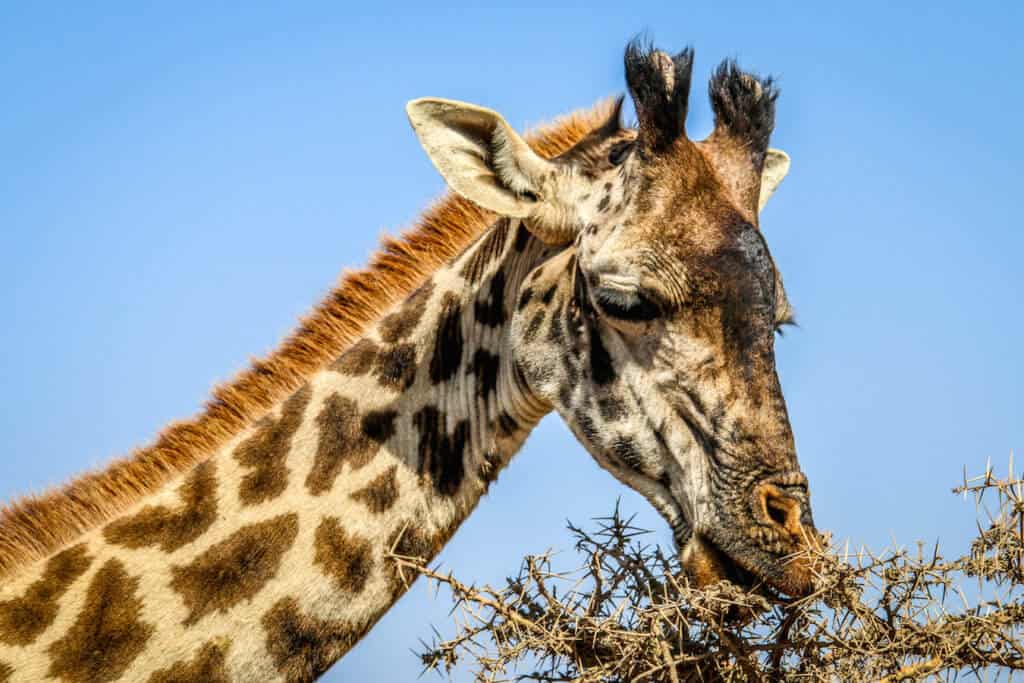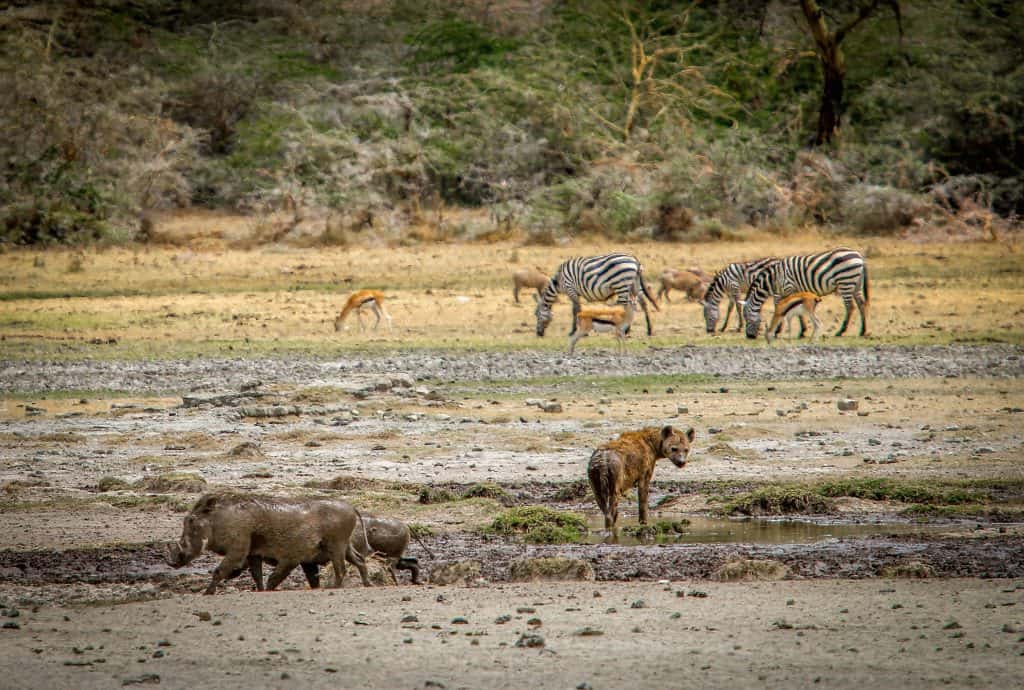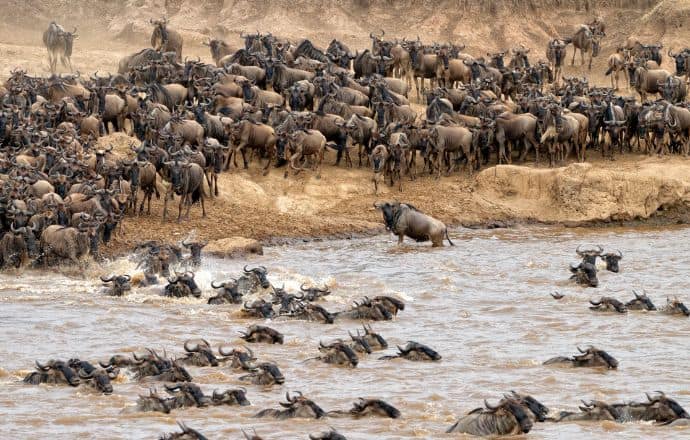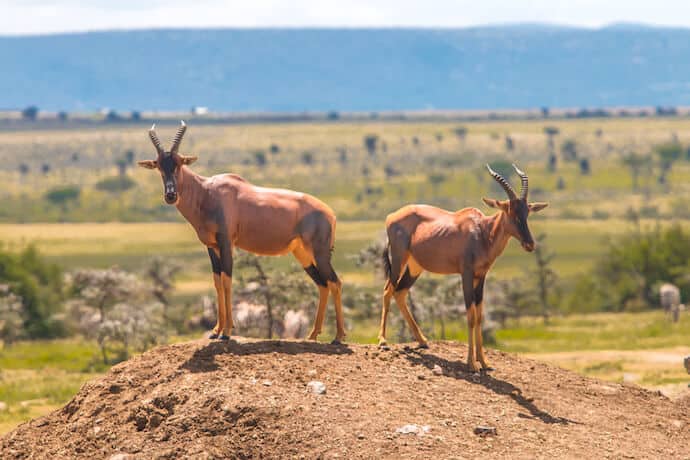One of the world’s most quintessential wildlife experiences, the yearly Unconfined Migration in Africa is an event like no other.
Millions of Zebras, Wildebeest, and other antelope species make this incredible journey wideness Tanzania and Kenya every year, facing Crocodile- infested waters and terrestrial predators (Lions, Leopards, etc) withal the way.
To witness such an event in the rookery of humanity is an emotional wits that could never be fully captured by mere photos or words.
Africa’s Unconfined Migration takes place in some of the most wildlife-rich natural areas in the world, making the wits all that increasingly rewarding.
This is one of those world travel skillet list items that we all dream of experiencing during our lifetime.
Here’s a unenduring guide on where, when, and why every nature lover should see the Unconfined Migration in Africa!

Masai Giraffe in Serengeti National Park, Tanzania by Bret Love & Mary Gabbett
Why Africa’s Unconfined Migration is Special
Consisting of millions of animals, East Africa’s Unconfined Migration is the largest terrestrial mammal migration in the world.
Its stage encompasses some of the most scenic ecosystems on Earth, including the most well-known reserve on the continent (Serengeti National Park).
The migration is an uncounted spin in which the whirligig of life is showcased in its purest form.
Like the hands on a clock, a seemingly never- ending stream of fauna make their way wideness Africa’s landscape in search of supplies and water, never knowing how much time they may have left.
The Unconfined Migration is a famously treacherous journey in which the animals must not only find supplies to sustain themselves, but moreover requite lineage to the future generations that will alimony the yearly migration alive.
It’s a archetype game of survival of the fittest, and its contenders are some of the most majestic and resilient creatures Africa has to offer.

Male Leopard in Olare Motorogi Conservancy, Kenya by Bret Love & Mary Gabbett
Where to See the Unconfined Migration in Africa
The Unconfined Migration is unlike other natural events you might find elsewhere in the world.
The unpredictable journey’s timing and word-for-word locations are constantly changing, evolving based on current conditions.
Rain (and the lack thereof) is the main ingredient that dictates where and when the herds will be during a specific period of the year.
The only thing you can rest unpreventable of is the fact that the event will take place wideness Tanzania and Kenya.
But let’s explore some of the many East African National Parks and reserves that offer the weightier endangerment to see this natural spectacle:

Ngorongoro Conservation Area- Watering Hole by Bret Love & Mary Gabbett
Great Migration in Ngorongoro Conservation Area (Tanzania)
Located in Tanzania’s north, the Ngorongoro Conservation Area is the place to see newborn Wildebeest and Zebras during calving season.
The zillions of young prey moreover ways you might have a greater endangerment of experiencing Lion, Leopard, and other predator attacks during your visit.

Zebras in Serengeti National Park, Tanzania photo by Bret Love & Mary Gabbett
Great Migration in Serengeti National Park (Tanzania)
This is definitely one of the weightier places to witness the Unconfined Migration, as large herds of Wildebeest and Zebra uncork to congregate.
The Grumeti River makes for an imposing windbreak which the animals need to gather up the valiance to cross.
It’s moreover here where the Wildebeest will uncork to mate, hopefully offsetting their population losses during the migration.

Great Migration in Mara River (Tanzania & Kenya)
Animals that survive the Grumeti River crossing now squatter an plane increasingly daunting task.
Crossing the turbulent Mara River will requite them wangle to the fertile grasslands of the Maasai Mara.
But the threat of crocodile attacks here increases considerably, often causing unconfined panic among the herds.
This makes the Mara River a unconfined place to witness dramatic attacks, as well as the triumphant herds that manage to make it safely to the other side.

Topis in the Olare-Motorogi Conservancy, Kenya photo by Bret Love & Mary Gabbett
Great Migration in Maasai Mara National Reserve (Kenya)
The animals that make it to these feeding grounds can now fatten up surpassing returning to the Ngorongoro to requite lineage again.
But they moreover squatter one of East Africa’s greatest densities of lions.
The survivors will make their way south in a few months, leaving overdue the big cats that preyed upon them to defend their home territories.
The Maasai Mara moreover offers spanking-new sightings of Elephants and Giraffes, as well as rarer species such as the Topi.
.png)
